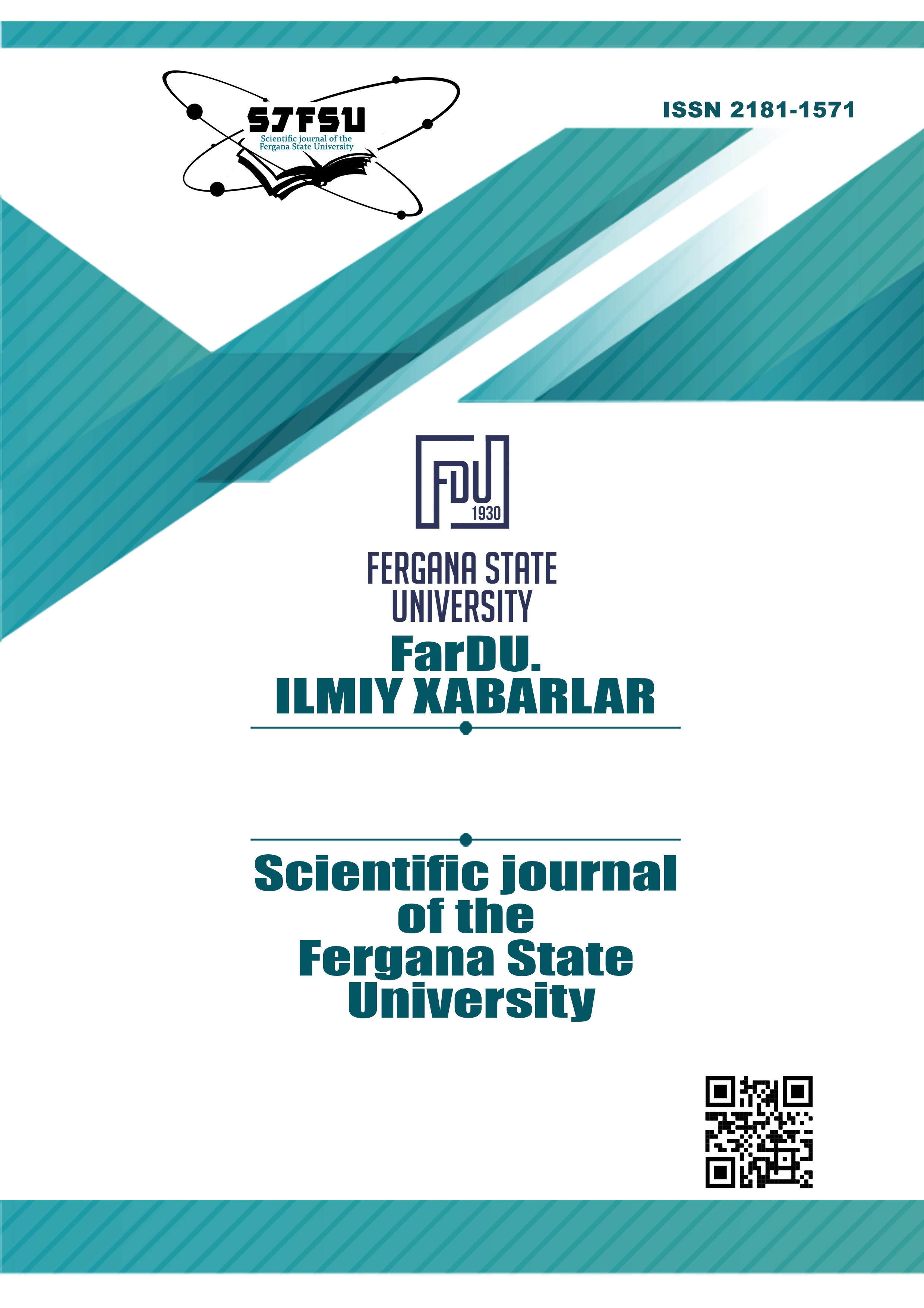SCIENTIFIC RESEARCH ON THE STUDY OF THE TOPOGRAPHY OF THE ANCIENT CITY OF FERGHANA VALLEY
Keywords:
Shuraboshat, Marhamat, Mingtepa, Axsikent, B.A.Latinin, A.N.Bernshtam, B.A.Litvinskiy, Y.A.Zadneprovskiy, N.G.Gorbunova, tombs.Abstract
The article covers the historiography of the ancient Ferghana Valley. The beginning of the millennium is considered a period of great migrations in the Eurasian region. In Chinese written sources, the Huns, Guns, or Yuechi continued to move from east to west or vice versa. The great migrations, the intermingling of peoples, will lead to great changes in the cultural world and geopolitics. Of course, such worldly changes did not bypass the Fergana Valley. Until now, the history of this period, its culture, is interpreted only on the basis of archaeological materials. The study of the culture of nomadic herders in Central Asia is mainly based on research conducted in burial mounds. As some of the uncovered ancient city ruins have been uncovered to one degree or another, the historical topography of the cities still cannot be fully revealed. Although these studies conducted until 2000s were a natural situation in their time, these conclusions are rare today. Because as a result of analyzing animal bones, plant remains and seeds, the role of natural factors in the crisis of climate change is a serious issue in front of science. In the reconstruction of ancient history, the origin of communities and peoples, genetic engineering is being restored based on modern anthropological analysis, and it is possible to trace the complete family tree of their migration issues.
References
ADABIYOTLAR RO‘YXATI
Matboboyev B. X. Shamsutdinov R. T. Mamajonov A. Buyuk Ipak yo‘lidagi Farg‘ona shaharlari. Andijon.: Meros, 1994.
Зохир Аьлам Кадимги тарихчилар Урта Осие хакида.Тошкент.: Юрист медиа маркази, 2008.
Ахроров И. Археологические исследования городища Ахсикент в 1960 году //Общественные науки в Узбекистане. 1962.-№8.
Баруздин Ю.Д. Карабулакский могильник// ИАН Киргизской ССР. Серия общественных наук. ТомIII. Вып.3. (История). – Фрунзе, 1961.
Берништам. А. Кухна Фаргона.Тошкент.: 1951
Бернштам А.Н. Древняя Фергана (научно-популярный). Тошкент. 1951.
Бернштам А.Н. Историко-археологические очерки Центрального Тянь-шаня и Памиро-Алая. / МИА №26. М.-Л.: 1952.
Бичурин Н.Я. Собрание сведений о народах, обитавших в Средней Азии в древние времена. Том 1. Москва-Ленинград. 1950.
Горбунова Н.Г. Культура Ферганы в эпоху раннего железа // АСГЭ. Вып.5. – Л.: Искусство, 1962
Горбунова Н.Г. Фергана по сведениям античных авторов // История и культура народов Средней Азии (Древность и средние века). - М.: Наука, 1976.
Заднепровскийю Ю.А. Древнеземледедь ческая култура Ферганы. Масква.: Наука.1962.
Заднепровский Ю.А. Основные земледельческие области Средней Азии в эпоху бронзы - раннего железа // Природа и человек. - М., 1988
Исамиддинов М.Х., Хасанов М.Х. История древнего и средневекового керамического производства Нахшеба. – Ташкент, 2000.
Козенкова В.И. Гйрат тепа (к истории поселени Ферганы 1 половины 1 тыс. н.э. //СА,31964.
Латынин Б.А. Некоторые итоги работ Ферганской экспедиции 1934 г. // АСГЭ. Вып. 3. -Л.: Искусство, 1961.
Латынин Б.А. Вопросы хронологии земледельческих культур древней Ферганы // Исследования по археологии СССР. - Л., 1961А.
Матбабаев Б.Х. О возникновения и этапах развития города Поп(Баб) // ОНУз. №8. –Ташкент.: 1994.
Матбабаев Б.Х. Могильник Мунчактепа в Северной Фергане (Узбекистан) // РА. №3. – М., 1999.
Downloads
Published
Issue
Section
License
Copyright (c) 2023 Scientific journal of the Fergana State University

This work is licensed under a Creative Commons Attribution-NonCommercial-NoDerivatives 4.0 International License.
How to Cite
Most read articles by the same author(s)
- , SCIENTIFIC RESEARCH ON THE STUDY OF THE TOPOGRAPHY OF THE ANCIENT CITY OF THE FERGHANA VALLEY , Scientific journal of the Fergana State University: No. 2 (2023): Scientific journal of the Fergana State University (Exact and natural sciences)
- , , OPTICAL SPECTROSCOPY OF CHITOSAN AND FILM MATERIALS BASED ON IT , Scientific journal of the Fergana State University: No. 3 (2023): FarDU ilmiy xabarlari jurnali (Aniq va tabiiy fanlar)
- , , METHODS OF TEACHING THE SUBJECT OF TECHNICAL MECHANICS IN DIRECTION OF TECHNOLOGICAL EDUCATION , Scientific journal of the Fergana State University: No. 3 (2022): Scientific journal of the Fergana State University
- , THE HIGHEST MANIFESTATION OF COMMUNICATIVE BEHAVIOR , Scientific journal of the Fergana State University: No. 6 (2023): FarDU ilmiy xabarlari jurnali (Ijtimoy gumanitar fanlar)
- , MORPHOGENETIC FEATURES OF THE SOILS OF THE CITIES OF FERGHANA AND KOKAND , Scientific journal of the Fergana State University: 2024: KONFERENSIYA. "TUPROQ BIOGEOKIMYOSI – BIOSFERANING BARQAROR RIVOJLANISHI VA MUHOFAZASI" xalqaro ilmiy anjuman.
- , THE ORETICAL AND PEDAGOGICAL BASIS OF INDEPENDENT LEARNING OF STUDENTS THROUGH INFORMATION TECHNOLOGIES , Scientific journal of the Fergana State University: No. 3 (2023): Scientific journal of the Fergana State University (Social humanities sciences)
- , STUDY OF THE HISTORICAL AND TOPOGRAPHIC FEATURES OF THE ANCIENT CITIES OF THE FERGANA VALLEY , Scientific journal of the Fergana State University: No. 6 (2024): Scientific journal of the Fergana State University (Social humanities sciences)

